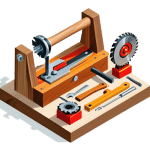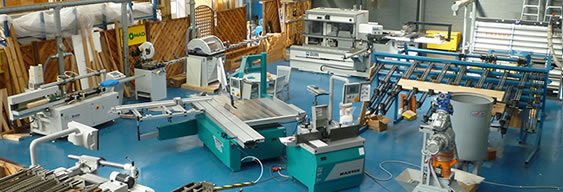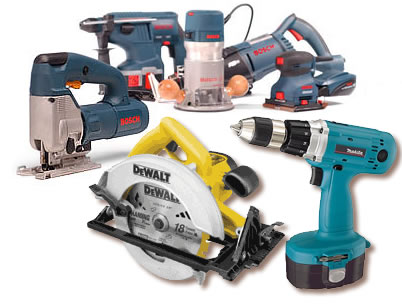How To Cut Enormous Costs On Wood, Tools and Woodworking Supplies
Simple tips for woodworkers to cut costs, not corners!
You will be surprised at how much you can save if you cut down costs of tools and supplies. When we say cut down costs we never imply compromising on quality.
Cutting Costs on Wood
Wood is your single largest cost in woodworking. If you are a hobbyist and your need for wood is not too high, you probably buy it at the local home store. Regardless of whether your demand is high or low, these are the ways to save money on wood.
-
Find a lumberyard.
-
Local Sawmills
-
Free Lumber from stores
-
Shop online. ( This one may sound strange, but hear us out).
-
Plan your purchase & shop on offers & discounts.
-
Build a relationships with a local vendor.
-
Substitute with high quality board & veneer.
Lumber Yards:
You will be surprised that the lumberyards & online retailers are willing to fulfill even small orders. You can get a lot of help at the lumberyard. Wood is already cut & stocked according to grade & size. It is here that you will find the maximum variety as well as the best price.
Local Sawmills:
You can get lumber at local sawmills - save 80-95% of what you would pay at a lumber yard or big box store.
For someone making or 2 projects a year, probably will not work for them because the lumber must be stacked and stickered to air dry for 6-18 months. For a woodworker making things frequently they should check the local sawmills.
Free Lumber From Stores:
There's also FREE lumber at the stores. They are "cauls" used to keep the lumber or plywood from have damaged edges from the steel strapping tape.
Look inside around the back door of the lumber section. Unless someone beats you to it, they will be there every day and FREE. I keep 20-50 on hand and use them for everything you can imagine, including frames for cedar chests, etc.
Online Retailers:
Online retailers are very helpful too. You can simply ask for the specifications you are looking for & they will send it to you. They commonly take orders over the phone as well.
When they wood is delivered to your doorstep you can inspect it & on the rare occasion something is not what you ordered you can return it for a free exchange.
Ordering wood online & over the phone seems strange at first. But it can begin to workout very well very quickly. You can avail great discounts with this method of ordering & it soon becomes a convenient way of doing business.
Additional Tips To Consider:
Dumpster Dive
Skids are a good source of free lumber. “Pallet wood can yield good finds. Yes, with a nail hole or two, but surprising species.” Kerry Marshall’s wine barrel chair is an example of how great stuff can be made from reclaimed wood
Don’t be a Wood Snob
Pine and construction lumber (carefully chosen and dried) from a big box store are economical and can be used to build nice furniture.
Build a Network
Use Facebook, Twitter, and email to let friends know you are on the market for unused wood. You’ll be surprised at what’s out there.
The first method of saving on tools is not to buy ones you do not require in the first place. Choosing the right woodcrafts to make & sell is a big step in this direction.
Power tools save time & effort & increase your productivity. They should be used wherever possible & viable, although they are definitely not a pre-requisite for starting out.
The thing is, there are some neat tricks you can use whenever you are in the market for some power tools.
The first one is a pretty staple one.
Look for online sales, discounts & discount vouchers in woodworking magazines.
However, it is still a very effective tip. You get some really big discounts on online. So what you need to do is join the newsletter of all the major woodworking tool websites & opt-in to be notified whenever any promotions come up.
Your second best option is to buy refurbished tools. We don’t usually recommend second hand tools. We’ll come to that in a minute.
Refurbished tools are pre-owned tools that have been restored to new like condition by the company selling it. This could be the original manufacturer, an online store or local hardware store that deals in refurbished tools. So look around & see where all you can find them. Many major online stores have a section for ‘refurbished tools’. It won’t be in your face but you need to find it.
Coming to 2nd hand tools, we don’t recommend them in most circumstances. In most cases you don’t know anything about the tool. You can’t see any wear & tear that’s not apparent to the naked eye. And that’s the kind of wear & tear that counts. There is usually no guarantee on 2nd hand tools whereas the refurbished ones almost always come with one.
So unless you know the history of the tool, do not purchase second hand. You do not know if the tool has previously been repaired. And in case it has you can be sure that it’s life has been greatly shortened. Getting it repaired again will cost you more money & won’t be worth the use you get from it.
Use Superior Accessories
Now this is a great way to get more out of your existing woodworking tools. It is also a cost effective technique to make cheaper consumer power tools give industrial grade results. By using high quality accessories like router bits, you can get better, faster & more accurate results.
Parts like router bits will wear out less and give you the finish of more expensive power tools as long as you use high quality ones even in your lesser power tools. High grade accessories make your tools last longer because they cut, grind & finish with a greater degree of ease, thereby putting lesser strain on your machinery.
Our approach wasn’t about buying cheap tools. Buying on price alone often costs more in the long run when a cheap tool doesn’t perform or fails and must be replaced with one that works. The trick is finding quality tools at an affordable price, and knowing how to make the most of them.
Our strategy was to buy the most basic and versatile tools before adding specialized ones, no matter how low the price. This led me to start with a tablesaw, a thickness planer, and a router.
A working shop has three hearts Start woodworking with a tablesaw, a benchtop planer, and a plunge router, and you’ll be equipped to perform a core set of vital milling, joinery, and shaping tasks. Plan on spending $600 to $1,200 for a used cabinet saw or new hybrid, $400 for a planer, and $200 for a plunge router or router combo kit.
Through cabinet-shop connections, I managed a snappy deal ($200) on a used cabinet saw with a 54-in. commercial rip fence. That price would be hard to match, but it is possible to find a hybrid or used cabinet saw with a high-quality fence for $600 to $1,200. Some of them will run on 120v household current, meaning you won’t have to rewire your shop for 240v service, but be sure to check for compatibility before you buy.
The tablesaw—This tool is the backbone of nearly every shop, and for good reason. It allows unmatched precision in ripping parallel edges and crosscutting at a variety of angles. Most woodworkers find it crucial for the basic milling of stock. It is also suited to many joinery tasks, easily producing tenons, box joints, and—with a reground blade—the tails for dovetail joints.
This style of saw will provide more power than a contractor-type saw and have the high-quality rip fence you need to do good work. However, because they are favored by professionals and serious amateurs, cabinet saws are harder to find on the used market. Scour the classifieds and online sales (be sure to check industrial auction sites as well), and do some networking.
Check the bulletin board at your hardwood supplier and ask the proprietors if they know of anyone selling a saw. Also call local cabinet shops. They sometimes have a surplus tool sitting idle that they’d be willing to sell. Take your time in this step. A careful investment will pay dividends in the long run, but a well-intentioned compromise can cause long-term frustration.
The thickness planer—A thickness planer will significantly expand the creativity and craftsmanship of your work by allowing you to buy roughsawn stock and use wood of any thickness in your designs. Nowadays, a new planer often represents a better value than a used model. In recent years, DeWalt and Ridgid have introduced portable planers with chip-ejection fans, which work as a built-in dust collector.
Dust collection is important for all tools, but essential for thickness planers. This feature can help delay the expense of a dust collector and thus reduce the overall cost of a planer. Speaking of dust collection, I should mention that I don’t use a dedicated dust collector in my shop. I use a shop vac with a small hose for my sanders and a larger-diameter hose for the tablesaw and router table, and I depend on the built-in chip ejection fan for my thickness planer.
The router—The router is the master when it comes to flexibility. Its potential far exceeds trimming and decorative edge treatments. A router will cut mortises, rabbets, and dadoes, and adding a router table builds in even more versatility, including biscuit joinery and raised-panel doors. But where the router distinguishes itself from all other tools is in its ability to produce identical parts using a pattern.
Other important power tools—A good jigsaw will help get you through many tasks, particularly cutting curves, that would otherwise require a bandsaw. Look for one with blade guides that keep blade deflection to a minimum. A handheld drill is also essential. A quality corded drill is much less expensive than a cordless one, and will never leave you without a charge. Also look for a quality random-orbit sander with a provision for dust collection.
One of the best deals on portable power tools, including routers and sometimes planers, comes in the form of factory-reconditioned tools. These are primarily tools that have been repaired at the factory after failing quality inspections or being returned by customers. While they cannot be sold as new, they are identical to new tools in quality and appearance and usually feature the same warranty (be sure to check).
Typical savings are anywhere from 15% to 30%, though you sometimes can find even bigger bargains. These tools can be found at Amazon.com and other online tool sellers. It is also possible to buy them through retail stores and, in some cases, directly from the manufacturer’s Web site.
A few words about auctions
For any auction, live or online, make sure you know the current retail price of tools like the one you are bidding on. Then set your price and stick to it.
Before you bid in an online auction, check the site’s rules of operation. At some sites, a winning bid is a binding contract, which can be a problem if you can’t inspect the tool before you purchase it. Don’t forget shipping costs. In some cases they can exceed the cost of the tool. Also, make sure the tool you’re buying will run on the power you have in your shop.
Many former industrial tools run on 240v single-phase power. If your shop doesn’t have 240v service, you’ll need to factor in the cost of upgrading before deciding to buy. You don’t want to saddle yourself with a tool you can’t use, no matter how good the price.
I hope this free guide helps you out in any way!
P.S. For a more comprehensive guide - check out Ultimate Small Shop
-Ted “Woody” Woodson from Woodwork Lovers Academy


